GenAI Agents and Regulatory Compliance: Streamlining Unstructured Data Extraction Gets a Lift from GenAI Agentic Frameworks
Contributed Commentary by Kavin Xavier, CapeStart
October 24, 2025 | Imagine that you’re a life sciences researcher tasked with answering a regulatory request that involves extracting meaningful data from over 200 clinical trial reports from various sources. You’re looking for patient demographics, study outcomes, adverse events, and dosage information. It’s a three-month task, and you’re already behind schedule.
This is the reality of working with unstructured biomedical data, a goldmine of scientific insight, trapped in PDFs, prose, and inconsistent formats. For decades, the industry has relied on manual effort, or automation with rules-based engines or template-based parsers. When AI was young, organizations may have used simple AI systems using Large Language Models (LLMs) like GPT and Claude alone, or retrieval-augmented generation (RAG). But these can struggle to keep up with domain-specific nuances due to:
- A Lack of context awareness—confusing primary and secondary outcomes
- Inaccurate attribution—mishandling adverse events across multiple interventions
- Domain misalignment—inconsistent results across therapeutic areas
With the surgical precision and high degrees of accuracy required in the life sciences, their output would often yield fuzzy data without the precision required in this space.
GenAI agents enable far better unstructured data extraction —and when used in concert with other GenAI agents, offer a genuine transformation for clinical data synthesis.
GenAI Agentic Frameworks: A New Paradigm in Intelligent Automation
First, a definition: GenAI Agents are collaborative, intelligent systems that understand instructions, take actions, and produce new content or decisions—often without a human manually guiding each step. Imagine a team of human experts conducting a systematic data sourcing effort. GenAI replicates this workflow—only faster, scalable, and tireless.
Clinical research is seeing the emergence of multi-agent GenAI frameworks. Instead of one model doing everything, multi-agent frameworks deploy a coordinated crew of specialized AI agents, each assigned a precise task—like a digital research team operating at scale. These agents are written using major LLMs and orchestrated using frameworks like LangChain, LlamaIndex, and CrewAI.
Leveraged together, they can navigate the complex topography of data types, formats, and sources.
Example: A Five-Agent-Based System
For example, one multi-agent GenAI pipeline for extracting published journal articles uses five agents:
- Retrieval Agent This entry point of the pipeline interprets the research question and scours biomedical repositories (like PubMed or ClinicalTrials.gov) to retrieve the most relevant articles for analysis.
- The Domain Expert Agent
Infused with ontologies like SNOMED, MeSH, and MedDRA, this agent understands therapeutic-specific jargon. It tailors the entire extraction pipeline to the relevant context, for example, checkpoint inhibitors in oncology or ejection fraction in cardiology. - The Data Extraction Agent
This is the engine room. Guided by domain cues, it captures study design types (RCTs, cohort studies), participant demographics, intervention protocols, endpoints, adverse events, down to dosage and confidence intervals. - The Quality Control Agent
Data integrity matters. This agent validates extraction accuracy, flags inconsistencies, and ensures traceability back to the source. It acts as a second pair of eyes, only automated. - The Data Structuring Agent
Instead of rigid schemas, this agent dynamically generates a structured tabular format based on the actual outcomes found in each study. Today, it might need columns for tumor response. Tomorrow, it might need cognitive decline scores.
The Right LLM for Every Task
The brain of each agent is an LLM, but not always the same one. Depending on the task:
- OpenAI GPT models are great with dense, inferential tasks, such as multi-step, logical reasoning or discerning casual inferences in data.
- ChatGPT, ChatGPT 4o in particular, excels in high-precision production use where category-specific performance matters.
- Anthropic’s Claude can be excellent at summarization or context retention.
- Gemini 2.5 Pro can assist in recall screening tasks, and in certain experimental cases where cost/access considerations outweigh performance needs, such as rapid feasibility checks of large bibliographic datasets.
- Open-source LLMs fine-tuned on biomedical corpora like BioGPT or PubMedBERT offer even more specialization.
The flexibility to use different models for different roles is a major advantage - like assigning the best specialist for each job.
Example: ChatBot Data Extraction
For example, Global Value Dossiers (GVDs) include massive amounts of data and content. The professionals who create them create a critical resource for the organization to help launch its products. Navigating this information is as difficult as gathering it. A Chatbot may be leveraged to extract data from a GVD, making it easy for those supporting launch to access and refer to the critical material.
Example: Clinical Note Extraction
A Physician’s clinical notes taken while assessing patients provide rich detail on the patient’s condition, treatment, lifestyle, state of mind, and quality of life, among other important factors that could affect care and outcomes. As they are unstructured data, these notes are challenging to harness and meaningfully utilized. With GenAI, mining clinical notes for this valuable information is achievable. Life science professionals can harness this critical physician-patient interaction and use it to provide better patient care.
From Manual to Machine Intelligence
With multi-agent architectures, researchers can turn a monumental challenge of synthesizing unstructured scientific data into an opportunity. They can unlock the full value of its content in a structured, scalable, and intelligent way to enable better regulatory response, better science, and better outcomes for patients.
Kavin Xavier is vice president of AI solutions at CapeStart, Inc., a professional services firm supporting the healthcare and life sciences industry, and maker of the award-winning MadeAi™ platform that helps pharma organizations compete and win in the AI economy. For more information, please contact Kavin.Xavier@capestart.com.







Leave a comment